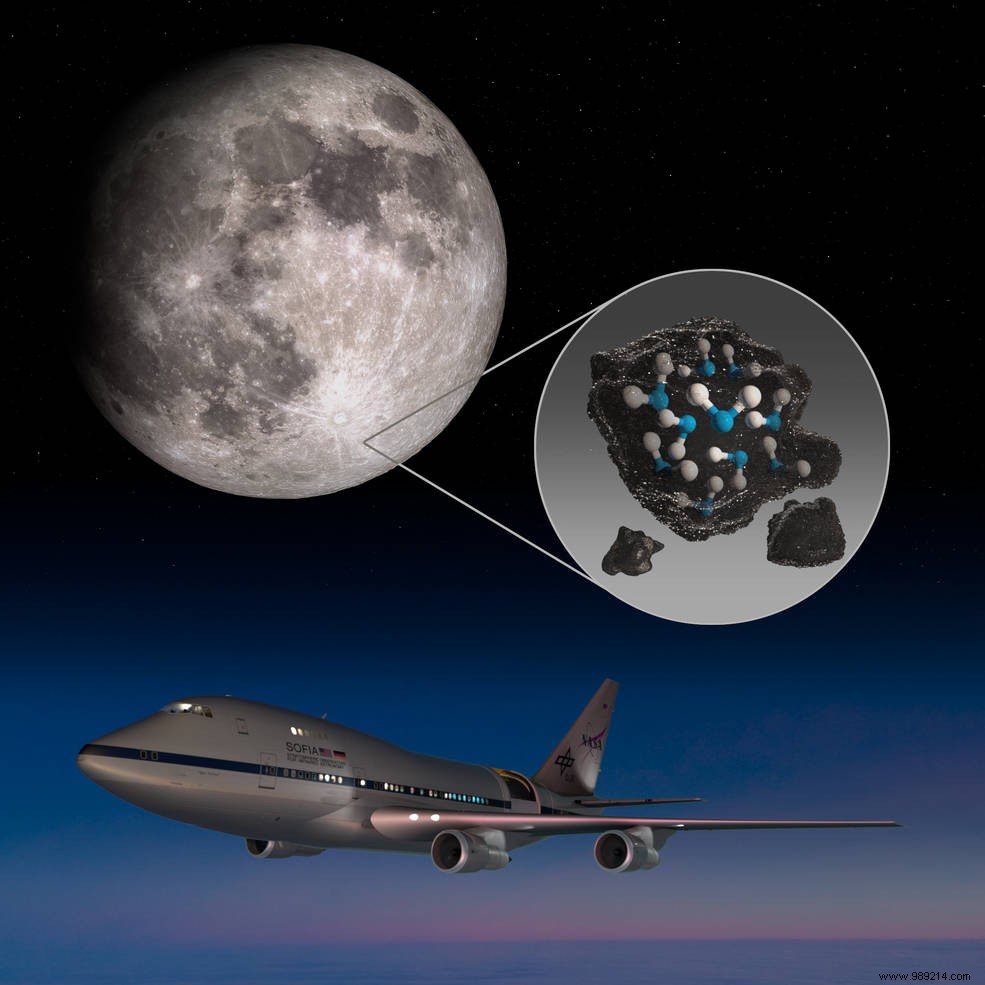NASA's Stratospheric Observatory for Infrared Astronomy (SOFIA) has confirmed, for the first time, the presence of water on the moon's sunlit surface. Great news for the future of human exploration of our satellite.
This Friday, NASA teased us with an "exciting discovery about the Moon" from the Stratospheric Observatory for Infrared Astronomy (SOFIA). It is an airborne infrared telescope developed by the American space agency and the German space agency in the 2000s.
"As the largest airborne observatory in the world, SOFIA is housed in a modified 747 capable of flying at an altitude of between 12,000 and 13,000 meters, or at above 99% of the atmosphere's obscuring water vapor, so as to allow a clear view of the universe and other objects in our solar system “, explains NASA.
The Observatory has therefore recently focused on an object much closer to home:our satellite. But what did he discover? This Monday, Paul Hertz, director of the Division of Astrophysics at NASA Headquarters (Washington), Jacob Bleacher, NASA Human Exploration and Exploitation Missions, and Naseem Rangwala, project scientist for the SOFIA mission , finally "dropped" the piece.
The Observatory has indeed detected water molecules (H2O) in the Clavius crater , one of the largest visible craters on Earth, located in the southern hemisphere of the Moon, the agency has just reported.
Previous observations have already suggested its presence, but researchers have so far been unable to distinguish between water and its close chemical relative, l hydroxyl (OH).
According to new data from SOFIA, ice water would be present here at concentrations of 100 to 412 parts per million, trapped in a cubic meter of soil spread over the lunar surface. For comparison, NASA notes that the Sahara Desert is home to a hundred times more water than SOFIA has detected.
“We had indications that H2O – the familiar water we know – might be present on the sunny side of the Moon “said Paul Hertz, director of the Astrophysics Division in the Science Mission Directorate at NASA Headquarters in Washington. "Now we know it's there."

This new discovery thus raises several intriguing questions. How did this water get there? How is it stored? Hard to say at the moment.
"Without a thick atmosphere, water on the sunlit lunar surface should simply be lost to space" , says Casey Honniball, of NASA's Goddard Space Flight Center in Greenbelt, Maryland. “Yet we see it somehow. So something is generating water and something has to trap it there “.
Several forces could be at play. Micrometeorites carrying small amounts of water could, for example, deposit it on the lunar surface upon impact. Another possibility involves a two-step process, whereby solar wind from the Sun delivers hydrogen to the lunar surface, causing a chemical reaction with oxygen-containing minerals in the ground to create hydroxyl. Meanwhile, radiation from the bombardment of micrometeorites could transform this hydroxyl into water.
Regarding storage, the researchers suggest that this water could be trapped in tiny bead-like structures in the ground that form due to the high heat created by the impacts of micrometeorites. Another possibility is that the water could be hidden between grains of lunar soil and shielded from sunlight.
Also remains to be determined whether this water will be easily accessible for use as a resource. As a reminder, NASA plans to send astronauts back on site from 2024, but also aims for a sustainable exploration of the Moon. It should be remembered, however, that the volumes of water involved in this work remain limited. Astronomer Jessica Sunshine, who spoke during the conference, pointed out that if we collected all the H2O molecules present on the lunar surface in an area the size of an American football field, we would get less than a liter of water.